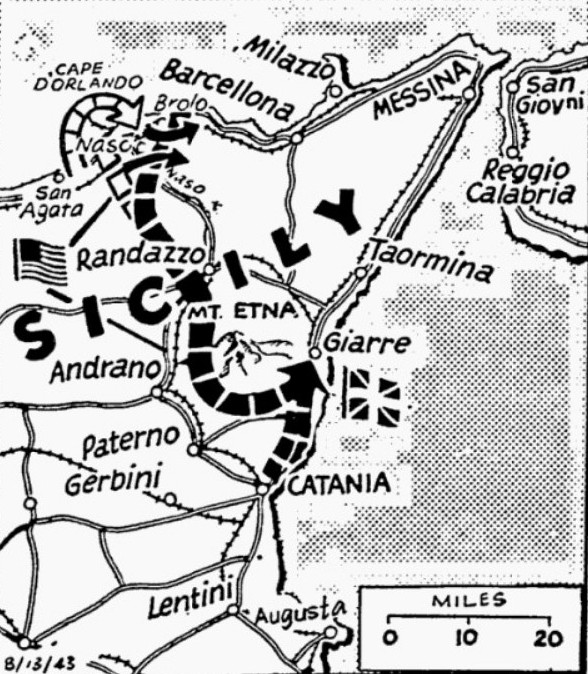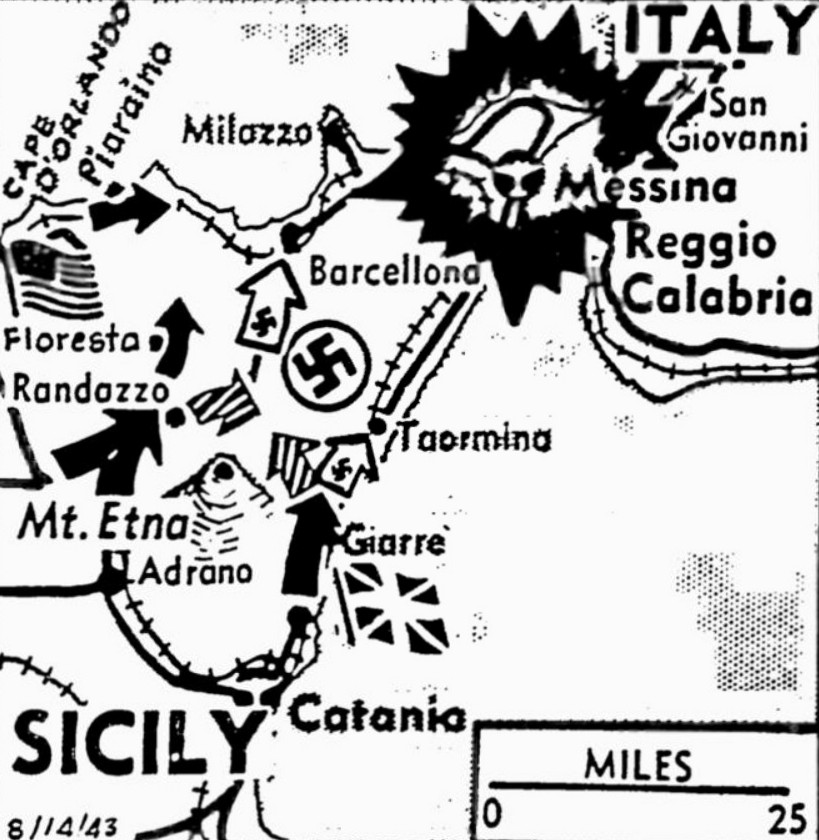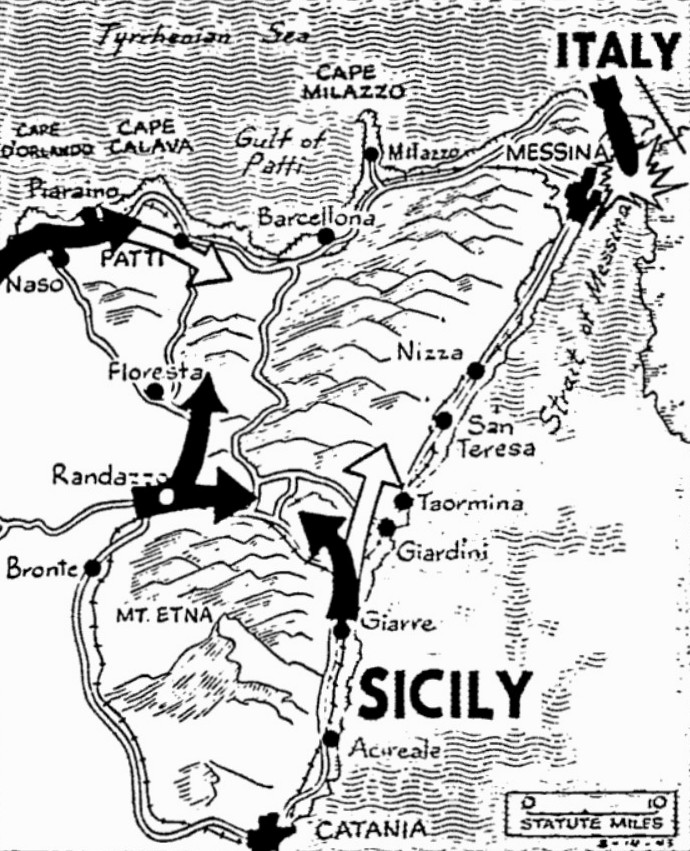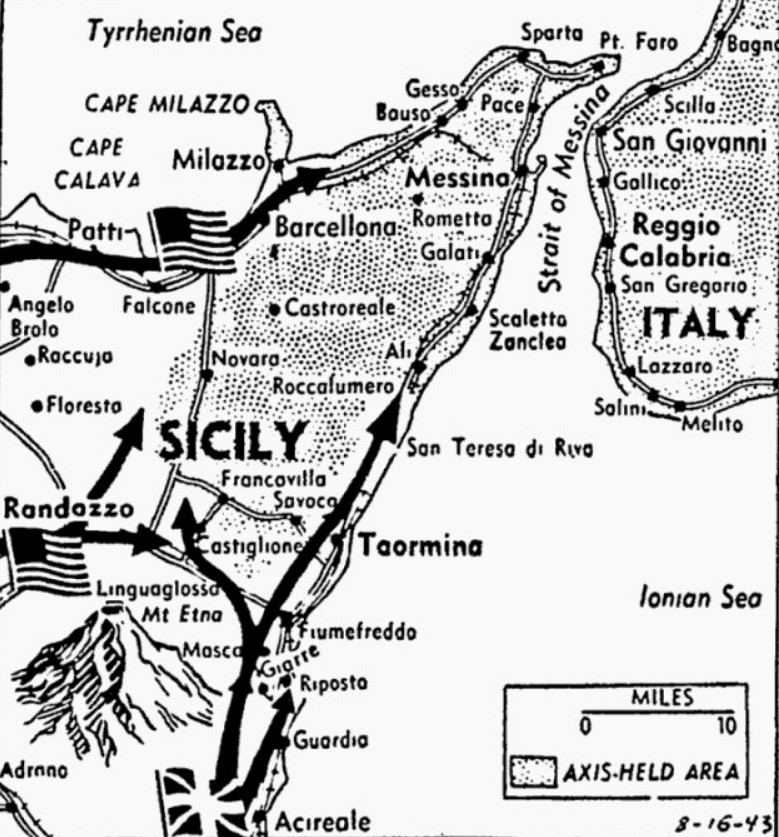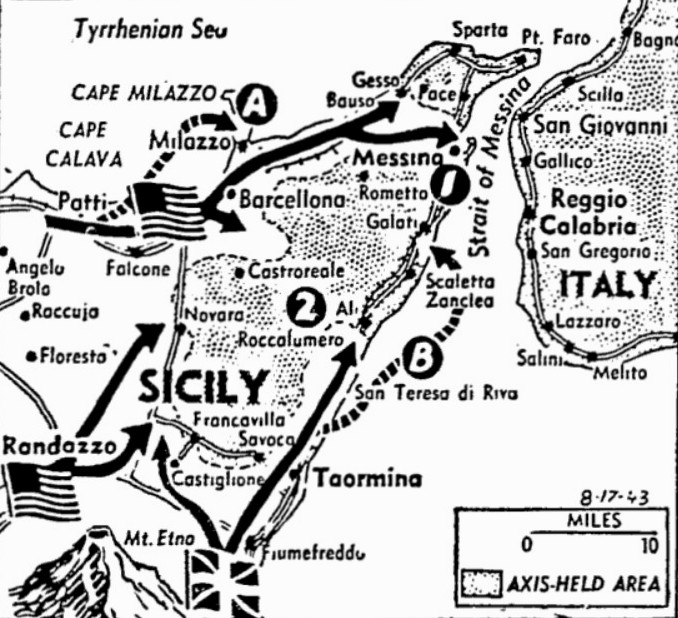The Pittsburgh Press (August 13, 1943)
Americans surge through broken Sicilian defenses
Two more towns seized on north coast of Sicily; Germans evacuating troops to mainland
By Reynolds Packard, United Press staff writer
Smashing toward Messina, U.S. troops have captured Naso and Brolo, on the north coast of Sicily 38 miles west of the Axis escape port. The British 8th Army was approaching Giarre, 37 miles south of Messina, while Allied forces in the center of the line were within four miles of Randazzo, key road junction. The north coast drive was speeded by the U.S. landing behind the German lines yesterday (arrow).
Allied HQ, North Africa –
U.S. troops plunged ahead eight miles on the north coast of Sicily, capturing Capo d’Orlando and two towns beyond it, in general Allied advances against fierce rearguard action covering a “quickening” German evacuation of the island, it was announced today.
As the campaign went into its final phase with tacit Axis acknowledgement that the Battle for Sicily was lost, the Allied bag of prisoners rose to 130,000, including another Italian general, this one named Fiumara, believed to be the commander of the Naples Division.
Capitalizing on the second landing behind the German lines, the U.S. 7th Army drove eastward behind a shattering sea and air bombardment. The united landing force and the main army swarmed through Capo d’Orlando, anchor of the Axis defenses, and forward to occupy the towns of Naso and Brolo.
8th Army advances
On the east coast, the British 8th Army moved up four miles to occupy the village of Torre Archirafi and threaten the neighboring towns of Giarre and Riposto.
While the wings of the Allied push reached within 35 miles of Messina, U.S. and British forces thrusting through the center at the key junction of Randazzo gained about four miles in the rugged mountain pass west of the town, which was already under light artillery fire.
Dispatches from the Sicilian front said the evacuation of Sicily by the main body of German troops was in full swing. Confirming the reports, authorities here said the rearguard fighting by the Axis forces was still bitter on both coasts and in the Randazzo sector.
A headquarters communiqué said the German resistance along the east coast “continued to stiffen,” apparently in a desperate bid to evacuate as many troops as possible across the narrow Strait of Messina to Italy before the Allies foreclose their narrowing northeastern Sicily bridgehead.
The reports made clear that the amphibious operation which landed U.S. troops around the Naso River behind the German lines Wednesday had been a complete success and had been backed up by the U.S. 7th Army in the Capo d’Orlando sector.
Blast bridges
Occupying Naso, three miles inland, the troops hammered eastward to take Brolo. Ahead of them, the warships, which had asserted in the landing, bombarded roads, railways and highway bridges from Piraino to Marina di Patti, probably destroying one highway tunnel.
British naval units, ranging to the edge of the Strait of Messina despite shore guns, aided the British push up the east coast road which had reached Torre Archirafi, three miles south of Riposto.
While light naval units were into the straits and operated off Capo dell’Armi, on the toe of the Italian boot, without meeting enemy ships, larger ships bombarded Taormina and Cape Ali, 22 miles northward, and the Riposto area Tuesday. Shore guns blazed away at the light craft.
The bitterest land fighting continued in the sector slightly south and west and Randazzo. The British forces, cooperating with the Americans, pushed through the mountainous terrain toward Maletto, four miles southwest of the road junction, and U.S. mobile troops on the Cesarò road above them made additional progress.
U.S. PT boats were working through waters off northeastern Sicily, aiding the aerial forces in stabbing at the shipping lanes across the straits through which the Axis is trying to take out its troops.
